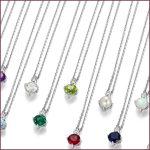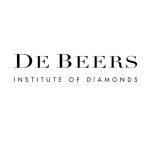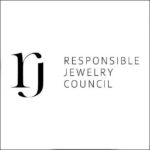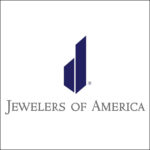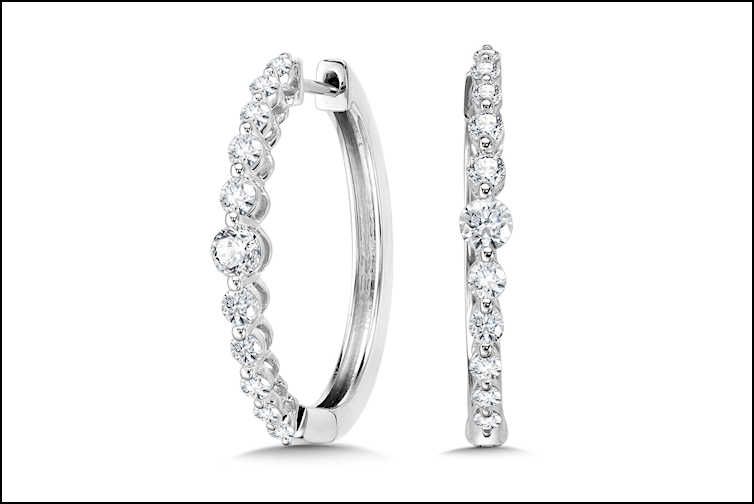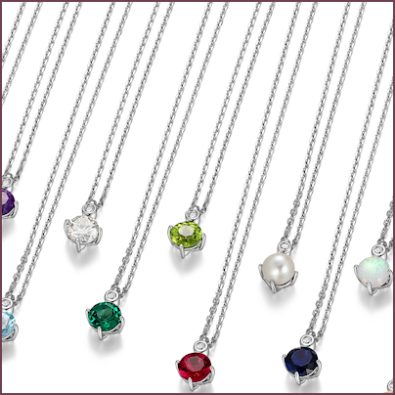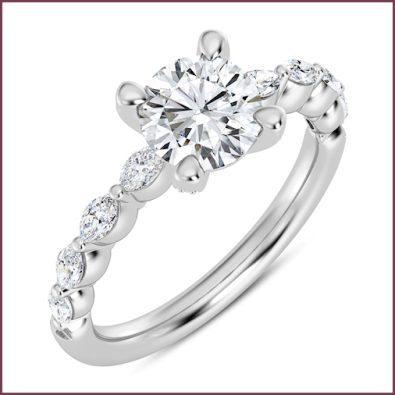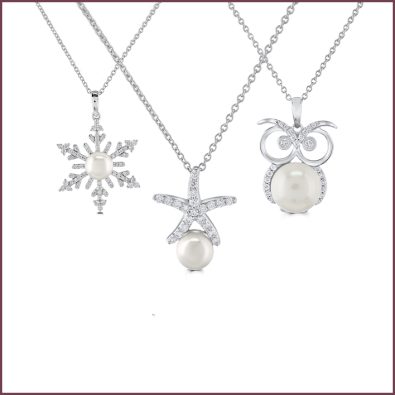Marketing Luxury in 2022
Consumers have a new appreciation and desire for more choices in the jewelry they wear.
The global luxury market is estimated to return to pre-pandemic levels in 2022, according to the 2021 True-Luxury Global Consumer Insight Report by Boston Consulting Group and the Altagamma Foundation. Among the main drivers of growth, cites the report, have been U.S. consumers, who started luxury purchases more quickly than expected thanks to strong government stimulus.
“Americans are back,” says Sarah Willersdorf, managing director and partner, Boston Consulting Group. “U.S. consumers are bullish on both domestic and abroad luxury consumption expectations, showing Americans are poised to regain their importance in the global luxury market.”

The desire for luxury will increase in the post-COVID world, finds the report, with Millennials and Gen Z, who will account for 60% of total consumers by 2025, looking to the future with optimism.
Among the major trends the report cites is the increasing virtualization of luxury (new digital tools for engaging the consumer), an omnichannel distribution system and seamless online-offline experience, and growing attention to the values of brands, most notably environmental sustainability and inclusiveness.
The virtualization of luxury can bring great opportunities of additional revenue streams for luxury brands through innovative digital engagement tools like gaming and social and live commerce, cites the report. In the U.S. the market, the potential of livestreaming has been estimated to reach $25 billion by 2023.
Last year, while 46% of luxury consumers concluded their purchases in store, 30% did their product research online beforehand. This highlights the importance of having a seamless experience and the need to re-think the role of each touch point, with the objective of creating a mutually reinforcing ecosystem that effectively caters to consumers across communication channels.
Sustainability issues are important to consumers in their purchasing decisions, with six out of 10 respondents in this research highlighting their influence on final purchases made. Consumers desire the human touch, underscoring the need for brands to create personal relationships with their customers across all channels.
Leverage Effective Technology
“The impact of technology and how the digital age has been a powerful tool for consumers in the jewelry buying process has changed how we as a community have been doing business for so long,” says Sagar Manilal, who manages sales for Indigo Jewelry, and recently shared diamond trends in a podcast for The Plumb Club. “Compelling technology is available for retailers like custom design tools, holograms of what renderings would like finished, and virtual try-on.”
Statistics by The Knot show that smart phones for online wedding planning activities have increased by 41% for browsing research on engagement rings, for example, which highlights the digital footprint for consumers, says Manilal.
MasterCard Spending Plus Tracker saw U.S. jewelry sales grow by 107% June 2021 over June 2020, and 59% over June 2019. “For retailers the time has helped them to accelerate digital strategies, try-on, and return policies to more adequately meet the needs of what today’s consumers want and accept. Online sales and virtual sales calls are on the rise, and retailers who meet the changing needs of the consumer are and will reap the benefits.”
Manilal is confident jewelry sales will continue to rise. “Customers are looking for new avenues to purchase jewelry and with the help of technology retailers can reach customers across the country with the click of a button.”
Sustain & Include
Today’s consumers, driven by Millennials and Gen Z, seek out sustainability and transparency in their brands, emphasizes Valerie Fletcher, Original Designs Inc. Building on the brand’s sustainable pursuits and growing consumer demand, ODI launched its LoveFire collection, designed with Greenland Ruby. The jewelry, set with Greenlandic rubies and pink sapphires with natural diamonds in gold or silver, comes with a guarantee of the gems’ origin and journey to market.
The sale of each LoveFire gem, Fletcher cheers, contributes to Greenland Ruby’s Pink Polar Bear Foundation, focused on supporting international polar research, aimed at protecting the inhabitants of Greenland impacted by climate change (humans, animals and vegetation).
Victor Weinman, president and CEO of ODI says he is proud to celebrate the company’s 60th anniversary by partnering with Greenland Ruby on this responsibly sourced collection that gives back to the community. “As members of the Responsible Jewelry Council we share a vision of transparency, traceability and the protection of our planet, all of which are the focus of the brand.”
The quest for sustainable products also has attracted consumers, especially Gens Y and Z, to lab-grown diamonds and gemstones, finds Cora Lee Colaizzi, marketing director for Quality Gold. “Consumers have a real appreciation for the technology. They love the fact that in seven to 20 days 1-carat can be created in the correct conditions versus millions of years in the earth.” But she says for most, it comes down to size and quality. “Couples have a budget and aspirations, and when compared to a mined stone, lab-grown gives them an option.”
Consumers want the choice and retailers need to include lab-grown gem options and be ready to talk about them. And not just lab-grown diamonds, Colaizzi says, as retailers are asking for finished jewelry that is also set with created color stones, notably ruby, emerald, sapphire, and Paraiba tourmaline.
Consumers have a new appreciation and desire for more choices in the jewelry they wear, with contemporary metals benefitting from this trend and poised for significant growth for independent jewelers, shared John Skaret, vice president of sales, Frederick Goldman, Inc., Independent Division, in a recent podcast for The Plumb Club.
In addition to being a popular wedding band metal choice for 50% of grooms, Skaret has seen a rise in men looking for contemporary metal bands for fashion or lifestyle purchases. “The men’s jewelry category, as a whole has exploded in the last three to five years. We’re seeing men wearing jewelry as an expression of themselves, fashion item, status symbol, and more.”
Make it Personal
With these new contemporary materials comes a large palette of colors and textures, weights and widths. “These attributes allow a man to be his own designer, creating his own unique look,” cheers Skaret. Many brands offer today’s consumer the opportunity to design his own ring.”
Whether gift or self-purchase, the jewelry we buy/give/receive/wear tells a part of our story. “Love is made up of special moments that grow and strengthen over time,” describes Parag Desai of SDC Creations. “Love has helped us overcome difficulties, brought happiness to dark days, and set the stage for a bright future.”
For this, Desai expects diamond jewelry designs offering different takes on the diamond journey theme, like SDC’s Love Moments collection, to be popular across jewelry categories. The collection symbolizes this growing and enduring love through graduated diamonds in various designs and jewelry styles.
Maximize Resources
SDC has marketing materials for the Love Moments campaign that not only portray in its imagery a variety of life moments, small to large, but also a diverse group of people represented. “Diversity is central to our business strategy, and exactly what makes America special and beloved,” Desai underscores.
Under the SDC umbrella, the Vera Wang LOVE Collection, which debuted in February its LOVE campaign, features real couples, representing same-sex and interracial couples. The message, love is alive, resilient, a journey, a rollercoaster, and a symphony!
Theresa Namie, merchandise manager for Ostbye, advocates retailers utilize the resources their vendors provide, including marketing material, photography and videos, website usage, and more.
“We continually study the market and designs to meet the needs across the country, so the retailers don’t have to do all the work,” Namie tells. “Partnering with companies that can do this for you can help you be successful. The bottom line, if you’re successful, we’re successful, so we have a stake in the outcome.”
Namie encourages jewelers to continually educate themselves by tapping into the rich information the trade shares on a regular basis. “Attend industry webinars and listen to podcasts as are found on The Plumb Club website. There is a lot of good resources available.”
